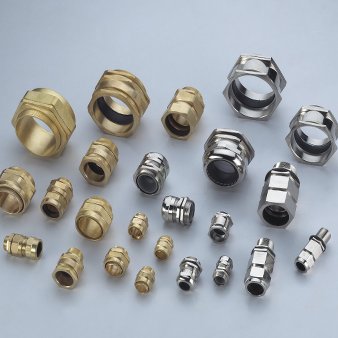As the name implies, cable glands are mechanical devices that connect cables to any piece of machinery. Additionally, they are usually referred to by the names of cord clutches, cord connectors, and cable strain reliefs.
In rough or hazardous environments where sealing as well as ingress safety are needed, cable glands from cable gland suppliers in UAE, are essential for dismissing cables. For electrical appliances and switch gears, these really are essential because of their ability to provide strain remedy and can even be linked to the cable’s aluminium sheath or armour.
It is not necessary to use a metallic cable gland for mechanical cable entry. For electronic instrumentation and automated systems, cable glands are required in a wide range of industries where they are used in conjunction with cables and wiring.
Cables of all sizes and types can be fitted with them. Its primary function is to safely cross a tube, cables, or wiring through a container without damaging it. Yet they must also safeguard electrical components from flames that may occur in dangerous areas.
Cable Gland Usage:
As mechanical fittings, they are an integral part of the electronic system. A cable’s connection with its electrical equipment is strengthened by using them. Cable glands from any reputed cable gland supplier can be used for any type of cable including electrical power and influence cables as well as instrumentation, data as well as telecommunications cables.
When used in conjunction with a sealing and termination machine, these devices guarantee that the cable’s features are maintained properly. To ensure the safety of cables attached to equipment, the cable gland performs a variety of functions in the management of cable systems.
Kind of Protection:
- Earthing, grounding, bond formation, insulation, as well as stress relief are all provided by these devices.
- Bulkheads and gland plates are used to seal cables.
- In addition, they could indeed comprise an electrical spark or indeed a fire as well as inhibit outer pollutants such as mud, sand, or fluid.
- The cable gland’s job is to prevent the cable from being pulled or twisted.
Working Procedure:
Their primary function is to protect electrical equipment compartments by acting as a sealing device. As a result of this, contaminants from the outside are prevented from damaging the electrical system and indeed the cable. Contaminations such as dirt, fluid, or water leak the wire joints, causing them to separate from the electrical components. To prevent the cables from becoming pulled & twisted out from the device, cable glands are installed on the cable ends of the device.
In an armoured cable, there is a continuity of earth. It may be necessary to test the cable gland’s capacity to endure powerful short circuits or malfunction currents if it is made of metal. So, it’s used as a retaining force to ensure only an appropriate resistance is allowed on cables. In addition to providing environmental protection, it also ensures that dust or water will not be able to enter the enclosed space.
Installed in areas where high access control protection is required, it provides extra sealing levels. Increasing environmental sealing somewhere at the cable entry point retains the enclosure’s access control protection rating. In order to choose the right cable glands, it is important to take into account the environment in which they will be used.
Different Elements:
Conductor
Aluminium or copper conducting material with a particular cross-section for the designated rating and a resistance/km within those prescribed limits is known as a conductor.
Electrical Insulation
Electrical isolation between conductors is achieved by covering them with insulation. The core is the name given to an insulated conductor. It’s possible for a cable to have more than one core. As the name suggests, helically stranded cores are used in a multiple core cable.
Three-core and multi-core cables have cores that are laid up in a specific order; the outer part has a right-hand lay and the subsequent layers have a contrary lay direction.
Inner Sheath
Inner Sheath is implemented either by extruder or wrapping to cables with stranded cores. As much as feasible, a circular form is aimed for. As the inner sheath is implemented so accurately to the laid up cores, it should have been able to extract it without causing any damage.
Final Words:
Cables that are not armoured would then necessitate an outer seal inside the gland to not only deliver ingress security but also to can provide a certain degree of preservation and protection. As a result, the armoured needed a mechanical and electronic clamping mechanism. Most often, the Gland will be needed to seal off the outer sheath and to secure the amour.

